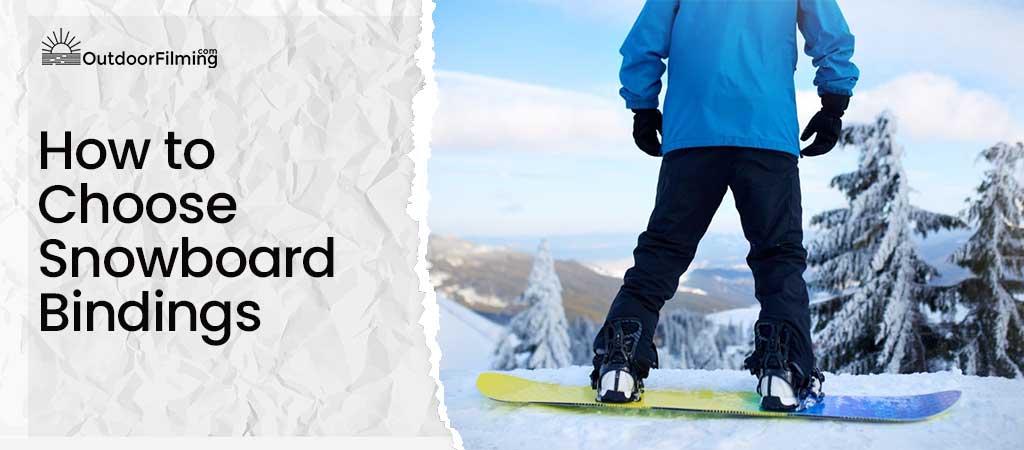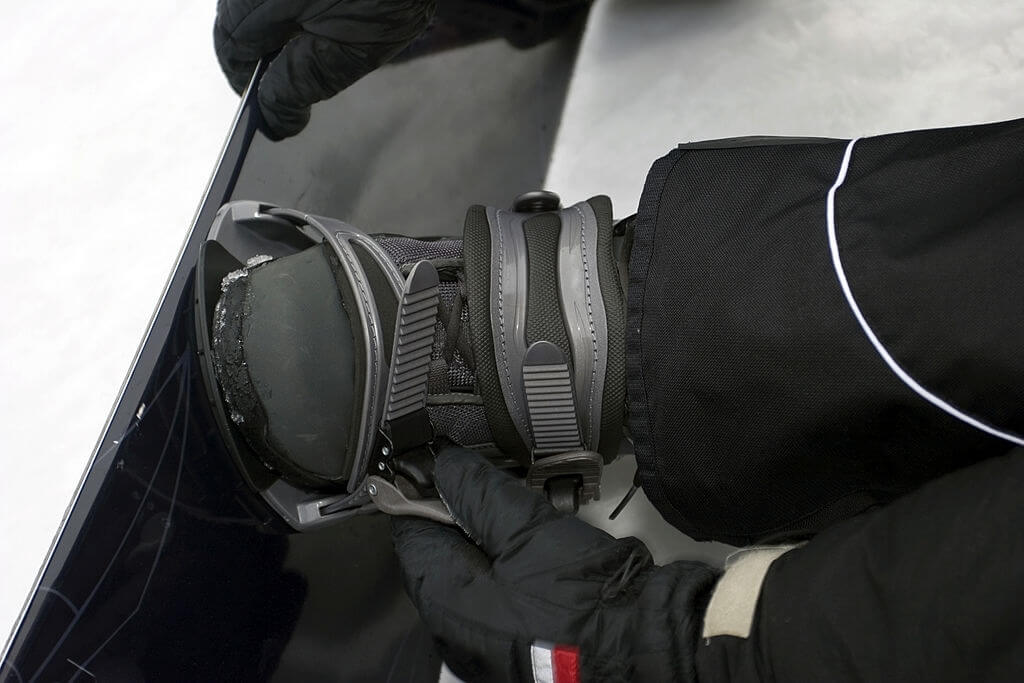
Instead of hibernating during winter, keep your spirits up by doing winter sports like snowboarding. If you are a beginner, you might feel hesitant about this idea due to injuries you could acquire. However, know that you can avoid these incidents if you are aware of choosing snowboard bindings that suit your comfort the most.
Snowboarding is not only beneficial to your physical health and your mental and emotional health as you pass through breathtaking scenarios while on the go. To have fun and safe snowboarding, finding the right set of snowboard bindings is the key to level up your control and comfort.
Snowboard bindings are the closest interface between you and your board, so you must find the best ones. An excellent binding must enhance your board’s natural flex pattern while giving you all-day comfort and preventing your feet from hurting. No matter how beginner or expert you are, wrong binding choices might make your boarding painful and disastrous instead.
Although there are many factors when finding one, your decision comes down to your preference, along with the options that best serve your needs and ability level. For starters, here is an article for you to know how to choose snowboard bindings.
Choosing Snowboard Bindings
Although most winter resorts offer pairs of snowboard boots and bindings, purchasing one for yourself alone is a recommendable option, especially if you are a first-timer and prone to injuries. If your snowboard bindings match your board and style well, you will have a better riding experience. Here are the factors that you should consider when choosing snowboard bindings in the market.
Binding Types
Binding types depends on the binding strap’s pressure. It has two main types: the strap-in bindings and the speed-entry bindings.
Strap-in Bindings
The first binding type is “strap-in” bindings best for free-riders and those who are precise about the binding straps’ pressure. Free-riders love backcountry where they have to strap-in at any point of steep slopes. Meanwhile, strap-in bindings are suitable if you want to pressure the binding straps precisely and entirely independently on your toes and ankle.
Speed-entry Bindings
The second type is “speed-entry” bindings that are best for beginners and those who want to stick to the groomers. It can also be doable in the backcountry, depending on your preference. Beginners can strap in standing up with speed-entry bindings, making it easier for you to lift yourself. This binding type is also recommendable if you have many skiers riding around you as you don’t need to bind yourself, which could consume other boarders’ time.
Flex
Most bindings are related to flex, indicating what riding style the binding is suitable, so ensure to assess your riding style first. Most brands rate the flex on a 1-10 scale: One being the softest and ten being the stiffest. Here are the following binding flex types by intended use that you can check out.
- Beginners: Soft to medium flex pattern (3-4 out of 10)
- Freestylers: Soft to Mid-soft flex pattern (1-6 out of 10), enough to tweak tricks with pressure while jibbing
- All-mountain: Medium flex pattern (4-8 out of 10), with enough support to power through crud and hardpack, but is still soft enough for park laps
- Freeride: Stiff flex pattern (7-10 out of 10), with fastest response time and the most power transmission for the aggressive rider
- Splitboard: Customized bindings for closer-to-the-board feel
Size
For compatible use, you must ensure that your boots and board match the size of the bindings you want to use. Too small snowboard binding size will not ratchet and secure your feet, while too large binding can cause lesser board control and response. The sizes vary on men, women, and kids measurement, having different sizes depending on brands.
Meanwhile, most bindings provide several strap-length and heel-cup-angle adjustments, allowing customize fitting. Know how to adjust these offers to optimize your performance.
Compatibility
Most bindings on the market today are designed to work across multiple mounting platforms. Snowboard binding mounting interfaces have four main types to ensure that your board fits with the bindings you want to purchase.
- 4-hole (standard)
- 3D (usually found on Burton boards)
- channel (most versatile, alternative for 4-hole and 3D systems)
- splitboard system (for splitboard mounting only)
Health Benefits of Snowboarding
Snowboarding is famous for its recreational purposes, but only a few boarders know its benefits for a rider’s health and wellness. Here are the four health benefits of snowboarding that will encourage you and your family to do so.
- Snowboarding burns calories: It is an excellent cardiovascular activity when you want to lose weight. The steeper the slope, the more calories you can burn. Cold weather also adds the advantage, as your body tends to work harder to raise your temperature.
- Snowboarding strengthens lower body muscles. As this sport requires a squat position, it can make your calves, glutes, quads, ankles, feet, and hamstrings stronger.
- Snowboarding enhances flexibility and balance. You can train your agility and adaptability as snowboarding needs frequent changing directions while maintaining core balance.
- Snowboarding uplifts mood. Exercising outdoors promotes increased production of endorphins – responsible for happy feelings.
Differences Between Snowboard and Ski Bindings
If you are a new snowboarder, you might confuse about how to choose snowboard bindings without getting confused with ski bindings. Snowboarders ride facing sideways, while skiers face downhill. Snowboards are only bound into one board, while ski boots need a pair for each foot.
Skiers can attach to their ski bindings while standing up, while snowboarders need to lock their boots into the bindings while bending over or sitting down on the snow. There is no automatic mechanism to release the binding as the snowboarder attached and removed it himself.

How to Maintain Snowboard and Its Bindings
Let’s face it: snowboards are a bit costly, especially if they are out of premium qualities. Lengthen your snowboard lifespan by knowing these essential maintenance tips on your snowboard and its bindings.
Snowboard Maintenance
- Wax Your Board: Waxing your snowboard can make you move faster while preventing your board from drying out. You only need some wax, iron, and a scraper, but make sure to avoid using the iron for other matters and dedicate it for waxing only.
- Keep It Dry: Ensure to wipe off any snow stuck on your board every after usage. Do not forget the crevices around the bindings as excess moisture can cause rusting.
- Deal With Gashes: An unexpected collision with a rock causes damage to your board’s base than often happens to the best snowboarders. If the scratch is not deep, buff it out with fresh hot wax. However, core shots (deep gauges that penetrated laminate layers) need more elbow grease.
- Store Properly: Before storing your board after the end of the season, wipe it properly, dry it off thoroughly, and melt it on a wax layer. There is no reason to remove the bindings as it keeps adjustments while preventing you from losing the screws and bolts. Store it in a dry, cool place to avoid rusting.
- Ride With Care: Prevention is better than cure, so board with care, especially when the coverage is not at its best. Exposed rocks and uneven surfaces are your snowboard’s worst enemies, so resist any marginal boarding conditions and pay attention to signage.
You may also like: How to adjust Rossignol Ski Bindings
Snowboard Binding Maintenance
- Fix Loose Screws: Fill up the screw threads with polish or scraped wax for a binding agent or stick a double-side adhesive tape at the bottom of the bindings before attaching it to the board.
- Remove Plate: There are screws concealed under your binding’s soleplate, so make sure to remove the plate to tighten the screws.
- Bring Spare Bolts and Screws: Loose bolts and nuts can happen while you are riding, so it is better to carry some spares. Meanwhile, you can also use wire wickets of your lift ticket before going to the repair shop.
- Tighten Screws in Alternating Pattern: Always apply this pattern when tightening screws. After the first screw, tighten the opposite screw instead of the adjacent screw.
- Install the Right Balls: Bindings with hard carving needs thick 6-mm diameter balls. However, this dimension might vary depending on the race and riding style that you have.
FAQ’s
Why do I need snowboard bindings?
Snowboard bindings connect power from your core muscles, legs, and feet into the board. Thus, you must know how to choose snowboard bindings that provide enough control over your board with ease while keeping your feet comfortable.
How much do snowboard bindings cost?
Secondhand or used snowboard bindings often cost about $100-$300, while new ones range from $400-$600.
How long do snowboard bindings last?
You can expect bindings to last 80-100 riding days as straps wear out already. Meanwhile, you must replace the screws every year to ensure safety.
Conclusion
Snowboard bindings serve as the vital connection between you, your snowboard boots, and your snowboard. Knowing how to choose snowboard bindings that match your snowboard and riding style can ultimately result in better board control and optimize your boarding performance.